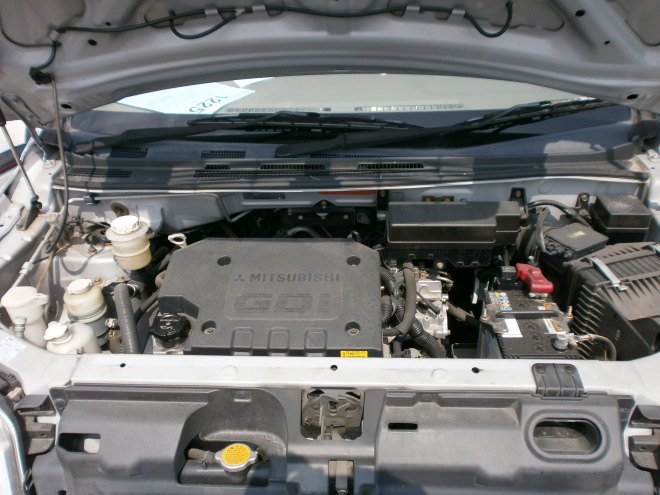New Or Used: Wishing For Simpler Times
Hi Sajeev & Steve,
“You have not covered extensively the problems encountered by GDI engines, especially Mitsubishi Dion (the engine is 4G63). As the revs go beyond the 2000 rpm, the ‘check engine’ light comes on, then eventually the engine — if forced — cuts off. After a few minutes, the engine can start but it does not take long before it repeats. I was told by a mechanic to buy a new pressure pump. This was fitted but the problem has not gone away. Please help!”
Ummm… we think your mechanic needs to keep away from Runaround Sue.
Cut Portion:
It turns out that a TTAC alum, Andrew Bell, did a fantastic job explaining this issue a few years ago. I’ll offer the Cliff Notes version here.
“In a GDI engine, the gasoline doesn’t touch intake side of the valve. As a result, the droplets have a tendency to bake onto the valve and significantly reduce performance… Even more alarming is that these deposits can dislodge and damage other downstream components (turbochargers, catalytic converters, etc). Manufacturers have added systems to capture these oil droplets and particulates, but no system is 100% effective. As a result, there are many disappointed early adopters with large repair bills.”
Steve Says:
When folks ask me why I am so sour on recommending cars that are on the early curve of advanced powertrain technologies, it’s because I regularly see these types of vehicles traded-in and sent to the auctions at a far greater frequency than their less technologically advanced counterparts.
Whether it’s a vehicle equipped with an early CVT that simply couldn’t handle the load (Ford Freestyle, Nissan Maxima/Rogue/Quest, Dodge Caliber), or a direct injection engine design that has severe teething issues (Mazda CX-7, the VW/Audi FSI engines, BMW with their N54 and N55 engines), I have come to the personal conclusion that automakers are far more apt to sweep these problems under the rug than to tackle them from the early get-go.
To Hyundai’s credit in particular, owners are now using a fuel additive to get rid of excessive carbon that can accumulate in their GDi engines. But there is a dark cloud in that silver lining, and it comes from the feedback of over 750,000 vehicles that have been independently inspected and appraised by certified mechanics and car buying professionals.
Automakers, to no fault of their own, often get sideswiped by long-term issues that couldn’t be anticipated during the research & development phase. As a result, those who stay with the tried and true often have a far better record of long-term reliability than their less conservative counterparts. Or to put this in a more brand specific way, there is a reason why a brand like Mitsubishi is ranked 8th at the moment when it comes to long-term reliability, versus a brand like Hyundai which has gone headlong into to direct injection, and is now ranked 21st overall. As I explained a few months ago on Yahoo:
“Mitsubishi has benefited from long model runs over the past ten years, and much of what they sell is devoid of the unproven electronics and technologies that have hurt other brands. Four-cylinder models are particularly strong in terms of long-term reliability.”
Does this mean a new Accent can’t last over 300,000 miles? Not at all. It does represent the fact that more sophisticated powertrains often have to compensate for unknown variables that can hurt their long-term reliability. In the case of GDi engines, it’s those vehicles that are not driven on a regular basis and have the corn curse that is ethanol lodged into their fuel systems.
This also bears some unusual fruit in the used car market. You may find that a 2011 or older Hyundai Azera offers an exceptional bang for the long-term buck because it didn’t come equipped with the third generation GDi engine. While a low-mileage late model Azera that gets driven infrequently, and has very short trips, may require a bit more engine care.
As many of you know, I absolutely love personal stories about cars that are kept for the long haul. Whether it’s a 30 year old FIAT that miraculously lasts over 500,000 miles, or a first-generation Dodge Neon that also gets to the moon and back, I love seeing cars live up to their potential longevity. But complexity is a real bitch when it comes to cars, and the current CAFE regulations are going to likely promote more rolling long-term dogs in the near future.
So let me ask you: Anyone have unfortunate experiences with what seemed to be the latest and greatest powertrain technologies? Whether your unpleasant experience came from ye olde Cadillac V8-6-4 which had the then tricky cylinder deactivation technology, or a late-model truck or SUV that had a CVT that became DOA within 100k, please feel free to share your experiences below.
Sajeev Answers:
Well then! What else can I add, especially considering relevant info of Piston Slaps past? ( Here, here, and here.) Let’s focus on the 4G63. Wait, was that direct injected? Do you mean the 4G93? If so, that was the first production GDI motor and likely lives on the bleeding edge of technology like most cutting-edge products. So what will get you out of your predicament?
Probably a good de-coking of the intake system, ditto the EGR. And maybe some walnut shells blasted into the system if you put a scope into the spark plug hole and notice excessive carbon buildup.
Or maybe its the throttle body. No matter what, I suspect you need to find another mechanic.
Note: All the links in this article have been sanitized and customized for your own viewing pleasure. Please click on at least a few of them, because it will likely give you a far greater understanding of this topic, and besides, the Long-Term Quality Index can always use a few more clicks and critiques. If you have used car questions, please contact us directly at carselect@gmail.com.
More by Sajeev Mehta and Steve Lang
Latest Car Reviews
Read moreLatest Product Reviews
Read moreRecent Comments
- Ras815 Tesla is going to make for one of those fantastic corporate case studies someday. They had it all, and all it took was an increasingly erratic CEO empowered to make a few terrible, unchallenged ideas to wreck it.
- Dave Holzman Golden2husky remember you from well over decade ago in these comments. If I wanted to have a screen name that reflected my canine companionship, I'd be BorderCollie as of about five years go. Life is definitely better with dogs.
- Dave Holzman You're right about that!
- EBFlex It will have exactly zero effect
- THX1136 What happened to the other companies that were going to build charging stations? Maybe I'm not remembering clearly OR maybe the money the government gave them hasn't been applied to building some at this point. Sincere question/no snark.


































Comments
Join the conversation
Still puzzling the definition of 'top tier' gas. Here in Canada we generally have only 3 major retailers of gasoline. 1. PetroCan which was government owned and is now controlled by Suncor. 2. Shell which is a multi-national. 3. Esso which was part of the Rockefeller empire that was allowed to retain its original name. Some Canadian Tire outlets sell gas. Then there are 3 primarily regional players who both I believe have their own refineries. 1. Irving in the Atlantic provinces. 2. Ultramar in Quebec and eastern Ontario. 3. Husky in the west and parts of Ontario. So are they all 'top tier'? Does it depend on the refinery or on the octane levels or on the additives. Or is it dependent on the ethanol content?
My parents were the unfortunate owners of a Mercury Colony Park with a variable venturi carb.